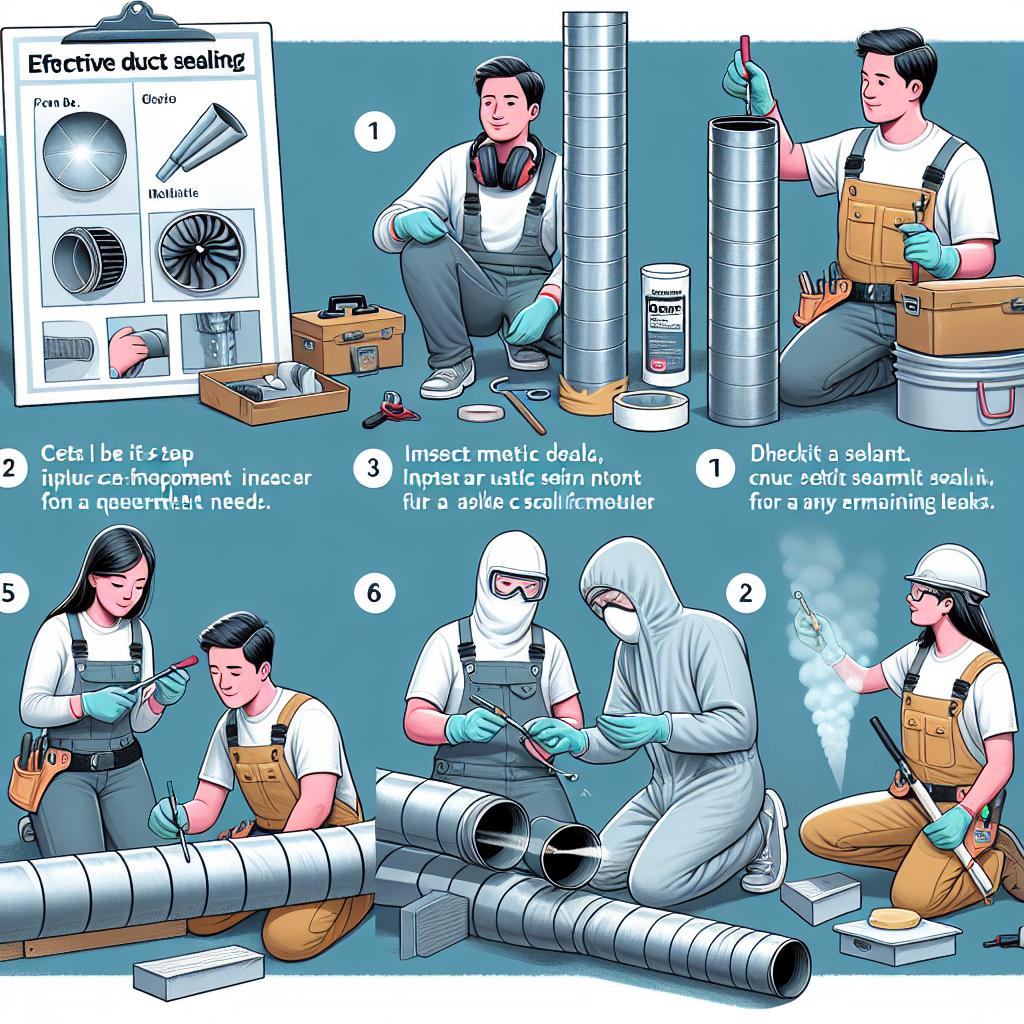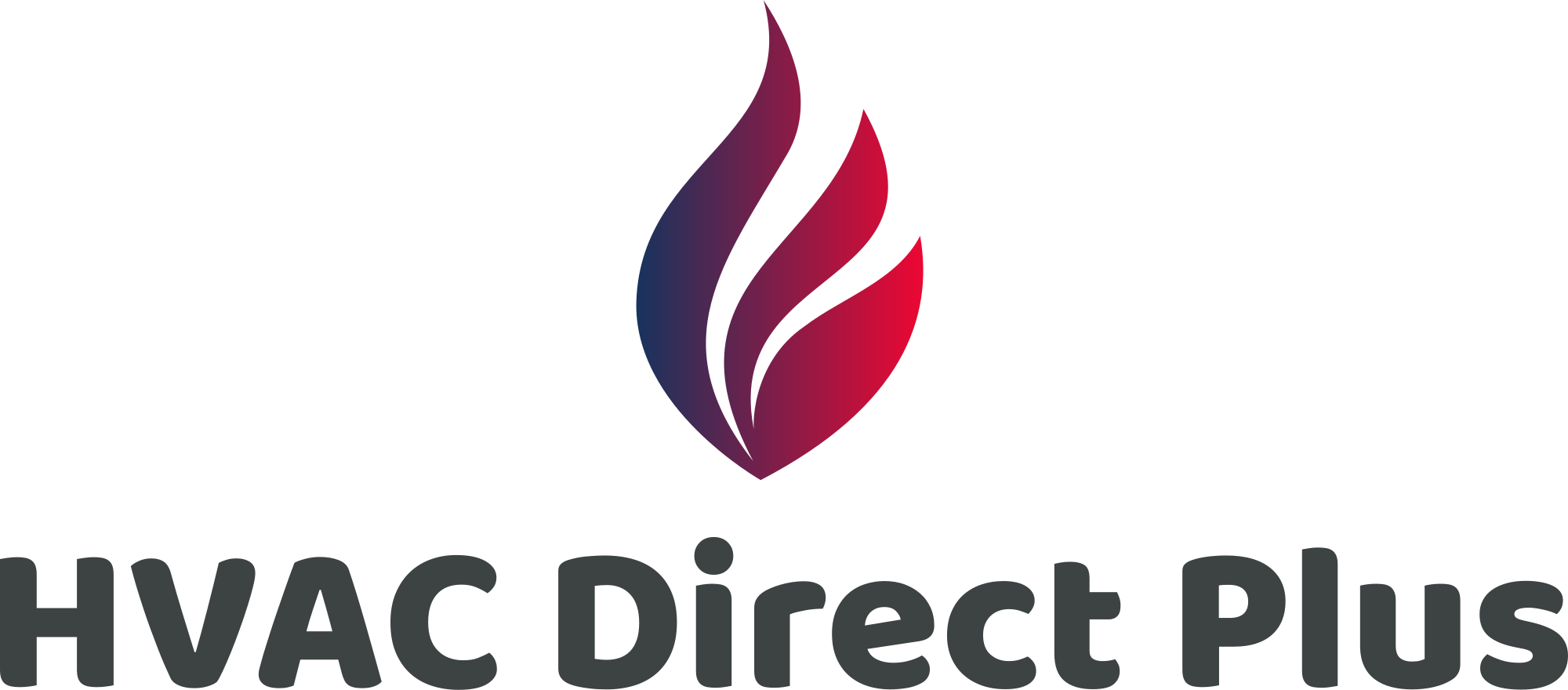Sealing the Deal: A Comprehensive Guide to HVAC Duct Sealing
In the heart of every comfortable home lies a well-functioning HVAC (Heating, Ventilation, and Air Conditioning) system, tirelessly working to maintain an ideal indoor climate. However, many homeowners overlook one critical aspect that can significantly impact efficiency and comfort: duct sealing. Just like a ship’s hull must be watertight to navigate stormy seas, your HVAC ducts need to be properly sealed to ensure that the airflow remains consistent and effective. Unsealed ducts can lead to energy loss, higher utility bills, and uneven heating or cooling throughout your living space. In this article, we’ll explore the importance of sealing HVAC ducts, share practical tips for identifying leaks, and guide you through the sealing process step-by-step. Whether you’re a DIY enthusiast or prefer to call in the pros, understanding the art of duct sealing will help keep your home cozy while promoting energy efficiency. Let’s dive into the world of HVAC duct sealing and discover how you can enhance the performance of your system.
Understanding the Importance of Sealing HVAC Ducts
Sealing HVAC ducts is crucial for maintaining an energy-efficient and comfortable indoor environment. When ducts are not properly sealed, conditioned air can escape, leading to increased energy consumption and higher utility bills. Below are some key reasons why sealing your HVAC ducts should be a priority:
- Improved Efficiency: Sealing ducts reduces air leaks, allowing your HVAC system to operate more efficiently.
- Enhanced Comfort: Properly sealed ducts ensure that every room receives the intended airflow, resulting in a more consistent temperature throughout your home.
- Reduction in Allergens: Sealing ducts minimizes dust and allergens from entering the system, improving indoor air quality.
- Prolonged System Life: An efficient HVAC system experiences less wear and tear, extending its lifespan and reducing repair costs.
To effectively seal your HVAC ducts, different methods can be employed, with options ranging from simple DIY solutions to professional services. Below is a comparison of common sealing methods:
| Method | Description | Suitability |
|---|---|---|
| Duct Tape | Quick and easy, but may degrade over time. | Temporary fixes for minor leaks. |
| Mastic Sealant | A thick paste that provides a long-lasting seal. | Best for larger cracks and gaps. |
| Foam Sealant | Expands to fill gaps, ideal for irregular spaces. | Great for hard-to-reach areas. |
| Professional Sealing | Involves specialized equipment and expertise. | Recommended for comprehensive sealing solutions. |

Identifying Common Sources of Air Leaks
Air leaks in HVAC ducts can significantly impact the efficiency of your heating and cooling systems, leading to increased energy costs and discomfort in your living spaces. Common culprits that contribute to these leaks include:
- Joint Seams: Over time, the joints between duct sections can become loose or weak, resulting in gaps.
- Damaged Ducts: Wear and tear from age or physical impacts can create holes or cracks in the ductwork.
- Improperly Sealed Connections: If duct connections are sealed incorrectly, air can escape where two ducts meet.
- Insulation Gaps: Inadequate or missing insulation around ducts can lead to leaks.
Identifying these sources requires a thorough inspection of your duct system. Focus on:
- Visual Inspection: Look for visible signs of damage or deterioration.
- Feel for Drafts: Use your hand to detect air escaping from joints or seams.
- Smoker Test: A smoke pencil can help visualize airflow and pinpoint leaks by observing how smoke drifts.
| Duct Component | Common Leak Locations |
|---|---|
| Flex Ducts | Connector ends and wrinkles |
| Rigid Ducts | Seams and joints |
| Plenums | Connections to the main ducts |

Step-by-Step Guide to Effective Duct Sealing Techniques
To ensure your HVAC system operates efficiently, mastering effective duct sealing techniques is essential. Begin by gathering the necessary tools and materials for the task. You will need mastic sealant or duct tape, a brush or putty knife, and a pair of gloves. Carefully inspect your ductwork for any visible gaps or holes, especially at joints and connections. For optimal sealing, consider using a flashlight to illuminate dark spaces, making it easier to identify problem areas. Once you locate leaks, clean the surface around them to ensure a proper bond with the sealing material.
Next, apply your chosen sealing method. If using mastic sealant, dip your brush or putty knife in the sealant and spread a generous layer over the leak. Ensure it completely covers the damaged area, and allow it to dry according to the manufacturer’s instructions. If you opt for duct tape, cut a piece long enough to cover the gap, pressing it down firmly to create a tight seal. For larger gaps, you might consider using metal flashing or special duct patches to reinforce the area. To finish, double-check your work by visually inspecting the ducts once more, ensuring all leaks are adequately sealed. This not only increases efficiency but can also reduce your energy bills over time.

Choosing the Right Materials for Long-Lasting Results
When sealing HVAC ducts, the choice of materials plays a vital role in ensuring durability and efficiency. Professionals often recommend using high-quality duct sealants that are specifically designed for HVAC applications. Opt for products that are both water-resistant and flexible, allowing them to withstand seasonal temperature fluctuations without cracking. Here is a selection of materials to consider:
- Mastic Sealants: These are thick, paste-like substances ideal for sealing large gaps and providing a robust barrier.
- Foil Tapes: Offering a strong hold and excellent resistance to heat, they’re perfect for sealing joints and seams.
- Acoustic Sealants: If noise reduction is a concern, these sealants help in reducing sound leakage.
- Insulation Materials: Ensure that duct insulation has a vapor barrier to prevent moisture accumulation.
In addition to selecting the right sealing materials, it’s crucial to consider the installation environment. Temperature and humidity levels can affect the performance of different sealants. Be sure to follow the manufacturer’s guidelines for application, which typically include proper surface preparation and curing times. For a clearer understanding of the advantages each material offers, refer to the table below:
| Material | Advantages | Ideal Use |
|---|---|---|
| Mastic Sealant | Durable and flexible | Large gaps |
| Foil Tape | Heat resistant | Seams and joints |
| Acoustic Sealant | Reduces sound transmission | Noisy environments |
| Insulation Materials | Prevents condensation | All ductwork |
Q&A
Q&A: How to Seal HVAC Ducts
Q: Why is sealing HVAC ducts important?
A: Sealing your HVAC ducts is crucial for maintaining energy efficiency and indoor air quality. Leaky ducts can diminish system performance, leading to increased energy bills and uneven temperatures throughout your space. Plus, sealing helps prevent dust, pollutants, and allergens from entering your living areas. Think of it as giving your HVAC system a much-needed upgrade!
Q: What materials do I need for sealing HVAC ducts?
A: To seal ductwork effectively, you’ll typically need mastic sealant or foil tape. Mastic is a thick, sticky substance that can be applied with a brush or your fingers, while foil tape is a durable option that offers a longer-lasting seal. You may also want to use HVAC duct insulation for added efficiency. Gather your tools: a putty knife, a brush, and maybe a pair of gloves for mess-free work!
Q: Can I seal the ducts myself, or should I hire a professional?
A: While sealing ducts can be a DIY project, it often requires a keen eye for detail and some physical accessibility challenges. If you’re comfortable with home improvement tasks and have the right materials, go for it! However, if your ductwork is extensive, intricate, or located in hard-to-reach spaces, consider hiring a professional. They can ensure the job is done efficiently and effectively.
Q: How do I identify where my HVAC ducts are leaking?
A: Identifying leaks can be like a scavenger hunt for your home. Start by inspecting visible ductwork for any gaps, holes, or loose connections. Pay special attention to joint fittings and where ducts meet vents. A simple trick is to feel for airflow with your hand or use a smoke pencil — any escaping air indicates a potential leak. You might also consider hiring a technician for a more thorough inspection using specialized equipment.
Q: How do I actually seal the ducts once I locate the leaks?
A: First, clean the area around the leak with a vacuum or cloth to ensure proper adhesion. If you’re using mastic, apply it generously over the leak and smooth it out with your putty knife. For foil tape, cut a piece long enough to cover the leak and firmly press it onto the surface, ensuring there are no air bubbles. Check your handiwork, and don’t hesitate to add an extra layer for good measure!
Q: How often should I check and seal my HVAC ducts?
A: It’s a good practice to inspect your ducts at least once a year, ideally at the beginning of the heating or cooling season. If you notice an increase in energy bills, inconsistent temperatures, or excessive dust buildup, it might be time to check again. Just consider it part of your home maintenance checklist — like changing smoke detector batteries or cleaning gutters!
Q: Are there any additional steps to improve duct sealing and efficiency?
A: Absolutely! Consider insulating your ducts, especially if they run through unconditioned spaces like attics or crawl spaces. This helps reduce energy loss. Additionally, regular HVAC maintenance, such as changing air filters and scheduling annual system checks, can enhance efficiency. ensure that your entire ventilation system is balanced and functioning optimally for maximum airflow.
Q: What are the long-term benefits of sealing my HVAC ducts?
A: Sealing your ducts leads to improved energy efficiency and comfort in your home. This can significantly reduce your energy bills, enhance indoor air quality, and extend the lifespan of your HVAC system. Plus, a well-sealed system may reduce the frequency of repairs, saving you time and money in the long run. Who wouldn’t want a cozy, efficient, and economical home environment?
—
Remember, taking steps toward sealing your HVAC ducts isn’t just about comfort—it’s about creating a healthier, more energy-efficient home for you and your family!
Final Thoughts
As we wrap up our exploration of sealing HVAC ducts, it’s clear that taking the time to properly insulate and seal these conduits can significantly improve your home’s energy efficiency and comfort. By following the steps outlined in this guide, you not only contribute to a healthier living environment but also reduce energy costs and extend the lifespan of your HVAC system. Remember, every small action counts — from utilizing quality materials to regularly inspecting your ducts for leaks. So, take a moment to appreciate the invisible systems at work in your home, ensuring they operate at their best. With a little effort and diligence, a more energy-efficient and comfortable home is well within your reach. Happy sealing!

